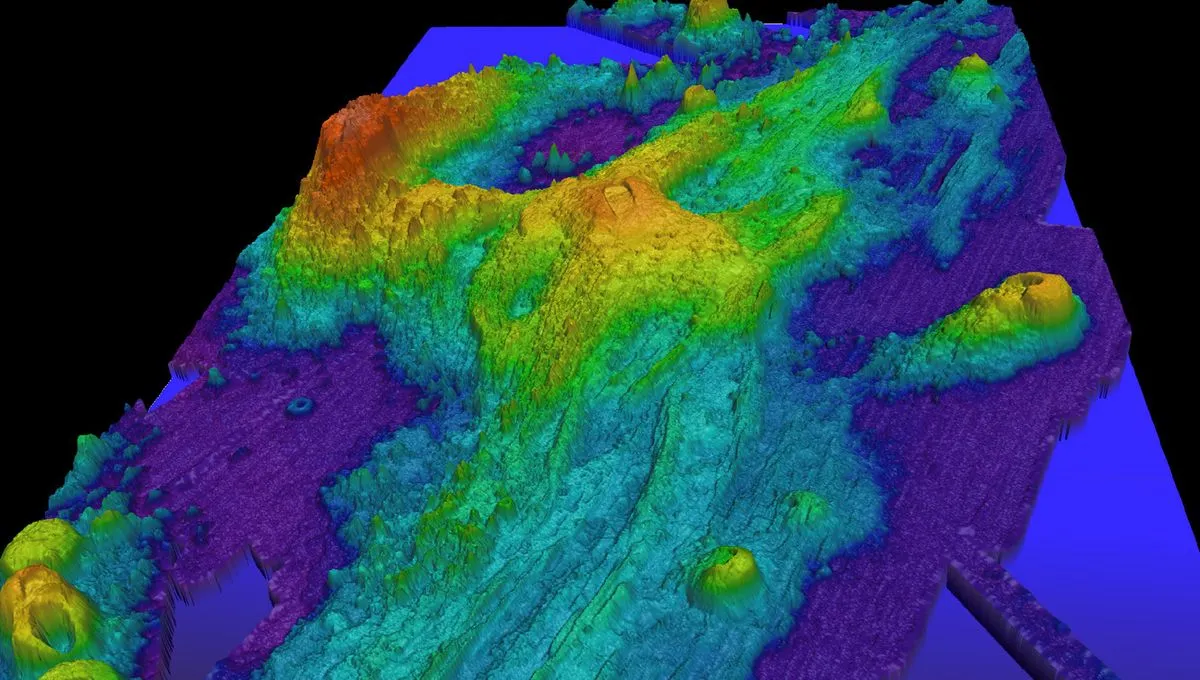
The Axial Seamount is situated on the seabed of the Pacific Ocean, approximately 480 kilometers (300 miles) west of Cannon Beach, Oregon. This remarkable underwater feature is located on the edge of the Juan de Fuca Plate, a small tectonic plate adjacent to the massive Pacific Plate. The Pacific Plate is well-known for its association with numerous volcanoes that form a continuous arc around the ocean's edge. Given its precarious position on a significant tectonic boundary, the area around Axial Seamount is characterized by extreme geological volatility.
Axial Seamount holds the title of the most active submarine volcano in the northeast Pacific, with a history of eruptions recorded in 1998, 2011, and 2015. Recently, since late 2024, scientists have observed signs of activity from this underwater volcano, as its inner chambers begin to swell, resembling a bloated belly. Experts predict that an eruption could occur later this year, potentially leading to a significant volcanic event.
The extensive monitoring capabilities of Axial Seamount set it apart from other geological sites. Scientists benefit from a comprehensive network of sensors, cameras, and instruments that provide a continuous stream of data regarding the volcano's condition. According to Rika Anderson, an associate professor in the Department of Biology at Carleton College, "It's likely the most closely monitored patch of ocean floor on Earth."
She elaborated on the advanced technology used for monitoring: “Miles of fiber optic cable have been laid from Newport, Oregon, to Axial Seamount, connecting numerous deep-sea instruments on the ocean floor.” These instruments continuously monitor various parameters, thanks to the Internet and power supplied by the fiber optic cable, ensuring ongoing data collection.
Anderson is one of many scientists utilizing the equipment surrounding the seamount for research purposes. As a biologist focused on the evolution of life in relation to its environment, she considers Axial Seamount an ideal natural laboratory. “We think that hydrothermal vents were likely sites for the earliest steps of the origin of life,” she explained. “Vents have existed for an extensive period, and many researchers believe they played a crucial role in the development of early microbial life.”
Anderson further noted that these early microbes likely thrived in environments rich in heat, iron, sulfur, and other essential elements found in hydrothermal vents. These components may have been instrumental in the early stages of life's emergence on Earth.
The anticipated eruption of Axial Seamount provides a unique opportunity to observe how deep-sea microbial communities recover after a significant disturbance. While this eruption will be a natural occurrence, the seabed is increasingly threatened by deep-sea mining activities aimed at extracting lithium and other battery metals necessary for the global transition to renewable energy. The long-term effects of such industrial operations on these delicate ecosystems remain uncertain.
Anderson expressed concern about how mining might impact these ecosystems, stating, “It's fascinating to see how microbes respond to major disturbances like eruptions, especially as we also disrupt these deep-sea environments through mining. We want to understand the anthropogenic effects on these systems.”
Despite the potential for groundbreaking discoveries, the next eruption of Axial Seamount could pose its own challenges. While humans on land will remain safe, the eruption may inundate the surrounding seabed with lava and debris, potentially damaging scientific instruments in the area. “I’m keen to understand how ecosystem changes occur before and after an eruption, assuming our instruments don't get destroyed,” Anderson noted. “We are uncertain where the lava will emerge.”
This precarious situation is compounded by recent budget cuts imposed by the Trump Administration on the National Science Foundation and the Ocean Observatory Institute, placing the future of this important research project in jeopardy. Anderson highlighted the ongoing concerns: “If the eruption occurs, we don’t know how effectively we can continue the project if our equipment is damaged. The funding cuts also add to our uncertainties regarding the longevity of this research.”
In conclusion, the Axial Seamount represents not only a fascinating geological feature but also a vital research site for understanding the origins of life and the impacts of human activity on deep-sea ecosystems. As scientists continue to monitor its activity closely, the volcano's future remains a subject of both excitement and concern.